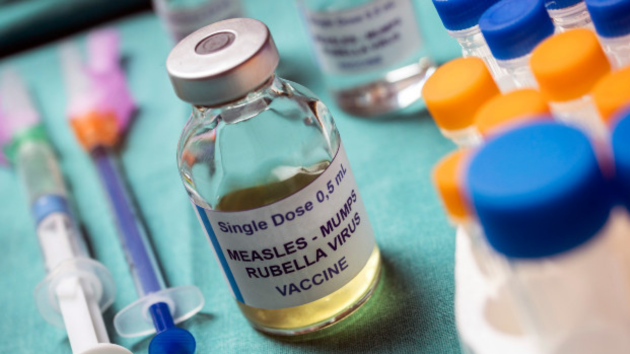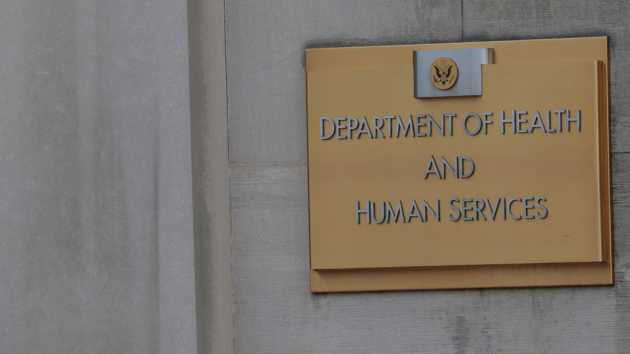Amid rising measles cases, a new generation of doctors is being taught how to spot the disease
Written by ABC AUDIO ALL RIGHTS RESERVED on February 16, 2024

(NEW YORK) — Over the last several years, isolated outbreaks of measles have been popping up across the United States.
Most recently, between Dec. 1, 2023, and Jan. 23, 2024, there have been 23 confirmed cases of measles with infections reported in Pennsylvania, New Jersey, Delaware and the Washington, D.C. area.
Emergency medicine physicians and departments have to relearn how to rapidly detect and diagnose a disease that many have never had to treat before, only learning about it in school.
Measles was declared eliminated in the U.S. in 2000 because most Americans are vaccinated, and doctors told ABC News they and their colleagues may not even consider the disease as a possible diagnosis if a child comes in with a rash and a fever.
“The contemporary emergency physician or those in emergency departments, would they able to recognize measles initially the first time? And the answer is probably not,” Dr. Nicholas Cozzi, EMS medical director at Rush University Medical Center in Chicago, told ABC News.
The state of measles in the U.S.
Measles is a very contagious disease with the Centers for Disease Control and Prevention (CDC) saying every individual infected by the virus can spread it to up to 10 close contacts if they are unprotected including not wearing a mask or not being vaccinated.
The incubation period of measles from exposure to early symptoms averages 11 to 12 days with first signs including a fever that can peak from 103 F to 105 F, cough, and conjunctivitis.
Next, the measles rash will follow, which lasts five to six days. It will begin at the hairline and then proceed downward to the hands and feet. The rash will typically fade in order of appearance with severe lesions maybe peeling off in scales, the CDC said.
About one in five people in the U.S. who get measles will be hospitalized. Measles can cause serious health complications, especially in children younger than age 5 including ear infections, diarrhea, pneumonia, encephalitis (inflammation of the brain), and even death, according to the CDC.
The first measles vaccine, a single-dose vaccine, was introduced in the U.S. in 1963. In the decade prior, there were three to four million cases annually, which led to 48,000 hospitalizations and 400 to 500 deaths.
The CDC currently recommends people receive two vaccine doses, the first at 12 to 15 months and the second between 4 and 6 years old. One dose is 93% effective, and two doses are 97% effective.
Although hospitalizations and deaths due to measles have dropped dramatically, vaccination rates have been lagging and outbreaks have popped up in unvaccinated or under-vaccinated pockets of the U.S.
“What we’ve seen due to the rise of international travel and international migration, as well as global declining immunization rates, is the resurgence of a once eradicated — at the least in the United States — disease, and that is measles,” Cozzi said.
Doctors not recognizing measles
Despite measles being a once common childhood disease, most medical students, and even some emergency room doctors, have never seen measles or can recognize symptoms.
Doctors may remember what a textbook case of measles looks like but may also not be familiar with what a patient looks like in the early stages.
“Every medical student learns about measles during school, but that’s very different than seeing it on a daily basis and kind of understanding the ins and outs of the disease,” Dr. Keri Cohn, medical director of bioresponse and a pediatric emergency room physician at the Children’s Hospital of Philadelphia, told ABC News.
“And so, the vast majority of physicians in the emergency room that I work with has never seen measles before,” she continued. “And that is something that we’ve had to really kind of remind people, ‘This is how it presents; these are the things that you’re looking for.'”
Although Cohn has worked with measles cases before, due to past international work, she said she was surprised to be treating measles patients in Philadelphia.
Prior to the most recent outbreak in her city, which began in December, measles was not top of her list of possible diagnoses when a child visited the emergency room with certain symptoms.
“It is true that when a child comes in with fever and rash in Philadelphia, I’m not usually thinking about measles, and of course, in the setting of this outbreak, that has really changed the way that our physicians have thought about patients coming in with those symptoms,” Cohn said.
Teaching a new generation about measles
To make sure emergency room doctors are prepared in case they encounter a measles patient, hospitals have been developing response plans.
At Cohn’s hospital in Philadelphia, the bioersponse program had partnered with infection prevention and control, to develop a robust response.
“So the model is … we bring a large group of experts together in all different facets throughout the hospital system to kind of address the needs of the families, the patients, the physicians, the staff who are working against this outbreak,” she said.
Cohn has also worked to remind health care staff to take appropriate precautions such as making sure the patient is isolated and that staff entering the isolation room where N95s or a respirator with similar effectiveness.
In Cozzi’s case, he recently co-authored a paper in a recent issue of the Journal of the American College of Emergency Physicians, which includes reminders of what early-stage cases of measles look like and guidance on what information needs to be shared within hours of suspected cases.
“We wanted every emergency physician across the country to understand what measles looks like, how it presents, the life-threatening causes of it, why we’re seeing a resurgence, as well as the somewhat most of the deadly outcomes associated with it,” he said.
He also encouraged health care workers, both in and outside the U.S., to consider measles if a child arrives at a hospital or a clinic with a fever and a rash.
“If we don’t think of it, we’re not going to diagnose it,” Cozzi said. “If it’s not on top of our mind, we’re not going to consider it.”
Copyright © 2024, ABC Audio. All rights reserved.





